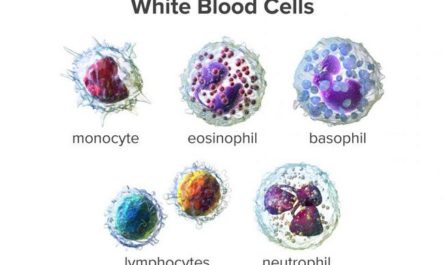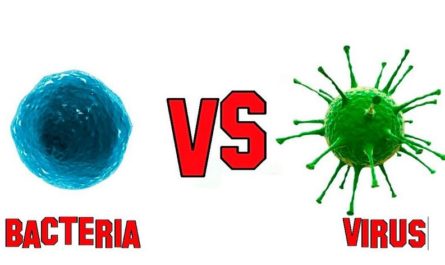Are you wondering if it’s possible to get strep throat without tonsils? Strep throat is a common bacterial infection that causes inflammation and soreness in the throat. While the condition is typically associated with tonsillitis, it is possible to develop strep throat even if you have had your tonsils removed.
Studies have shown that the incidence of strep throat in people without tonsils is increasing. This article will explore whether it is possible to get strep throat without tonsils, what the symptoms are, and how the condition is treated.
What are tonsils?
Tonsils are a pair of small, pinkish structures composed of tissue similar to lymph nodes. These soft structures are located near the back of the mouth on either side. They are covered with a wet, pink lining resembling the mouth.
The tonsils’ primary function is to protect the body against infection by bacteria, and viruses inhaled through the mouth. In addition, they can detect dangerous agents and help the immune system produce antibodies.
However, the tonsils are also prone to infection when working hard to combat harmful pathogens. This will result in redness, swelling, and discomfort.
In addition, As we age, the necessity of tonsils in bolstering our immune system is believed to diminish. This is why many people opt to have their tonsils removed, especially when they are causing recurrent infections.

Can you get strep throat without tonsils?
Yes, it’s possible to get strep throat even if you don’t have tonsils. The presence or absence of tonsils does not affect your risk of getting infected with group A streptococcus bacteria.
Strep throat can affect any part of your throat, including the pharynx, larynx, and other tissues. Therefore, even if you’ve had your tonsils removed, you can still contract strep throat if you come into contact with the bacteria.
There are some risks associated with getting strep throat without tonsils. For example, without tonsils, the body may have a harder time fighting off infections, which can lead to more frequent and severe illnesses.
Does tonsil removal help reduce the risk of strep throat?
Unfortunately, removing your tonsils does not decrease your likelihood of contracting strep throat. However, it can alleviate some discomfort associated with the condition, such as the pain caused by inflamed tonsils.
This means that while you may still develop strep throat after removing your tonsils, your symptoms may not be as severe.
When is Tonsil Removal Necessary?
The decision to have your tonsils removed should be made after careful consideration of your medical history and symptoms.
Typically, there are two primary reasons for a tonsillectomy: obstructive sleep apnea and recurrent tonsillitis.
Obstructive sleep apnea occurs when the airway is partially or completely blocked during sleep, leading to pauses in breathing. In some cases, the tonsils may be large enough to obstruct the airway, making their removal necessary.
Recurrent tonsillitis is another reason for a tonsillectomy. Tonsillitis is an infection of the tonsils, which can cause a sore throat, fever, and swollen lymph nodes.
While frequent strep throat may not always necessitate a tonsillectomy, repeated episodes of tonsillitis can indicate the need for surgical intervention.
What is strep throat?
Strep throat is a bacterial infection that affects your throat and tonsils, which are the lymph nodes located at the back of your mouth. This condition can cause significant inflammation in the tonsils, often spreading to the surrounding areas, resulting in a sore throat or pharyngitis.
The infection gets its name from the group A Streptococcus bacteria, which is the primary culprit behind this condition. There are over 120 different strains of this bacteria, but strep throat is a type of group A streptococcal (GAS) infection.
While strep throat is not typically life-threatening, it can lead to more severe illnesses like rheumatic fever, which can cause permanent damage to your heart and its valves.
Therefore, it is crucial to seek medical attention promptly to receive an accurate diagnosis and appropriate treatment. Strep throat can be resolved with the proper treatment within seven to 10 days.

Signs of Strep Throat
Strep throat is a bacterial infection that causes inflammation and soreness in the throat. It is essential to be able to recognize the signs and symptoms of strep throat, which include:
- Sore throat: A painful and scratchy sensation in the throat is one of the hallmark symptoms of strep throat.
- Difficulty swallowing: Swallowing food and liquids may be difficult and painful.
- Fever: A fever of 101 degrees Fahrenheit or higher is a common symptom of strep throat.
- Swollen lymph nodes: The lymph nodes in the neck may become swollen and tender to the touch.
- Headache: A headache may accompany other symptoms of strep throat.
- Nausea and vomiting: Some people with strep throat may experience nausea and vomiting.
- Red and swollen tonsils: In cases where tonsils are still present, they may be red, swollen, and have white or yellow patches.
Unlike viral infections, strep throat does not typically cause a cough. Therefore, if you are experiencing a cough and other cold symptoms, you are likely dealing with a viral infection.
What Causes Strep Throat?
Strep throat is a common bacterial infection caused by a type of bacteria known as Group A Streptococcus. This bacterium has several subtypes, but groups A and B are the most prevalent.
Group A Streptococcus is associated with various illnesses, including strep throat, Scarlet fever, Impetigo, Necrotizing fasciitis, Cellulitis, Toxic shock syndrome, Rheumatic fever, and Post-streptococcal glomerulonephritis, which is a rare kidney disease.
On the other hand, Group B streptococcus can also cause some cases of strep throat infections. Still, it is more commonly linked to other ailments such as blood infections, pneumonia, meningitis, urinary tract infections, and skin infections.
How is strep throat treated?
Strep throat is typically treated with antibiotics, which kill the bacteria causing the infection. Penicillin and amoxicillin are common antibiotics healthcare providers prescribe to treat strep throat.
Antibiotics can be taken for ten days. It is essential to follow the provider’s instructions and complete the entire course of antibiotics, even if the symptoms start to improve. This helps reduce the risk of the infection returning or causing complications.
Natural Remedies for Soothing Throat Pain and Discomfort
Apart from taking prescribed antibiotics or in case of viral infections instead of strep throat, there are some steps you can take to alleviate the discomfort:
1. Pain relievers
Over-the-counter pain relievers like ibuprofen (Advil, Motrin) and acetaminophen (Tylenol) can help ease throat pain and reduce fever.
However, it is important to avoid aspirin, especially for children recovering from chickenpox or flu-like symptoms, since it can cause a rare but severe condition known as Reye’s syndrome.
2. Hot Beverages
Sipping warm beverages like tea with a dash of lemon and honey can be a comforting remedy for your throat.
3. Cold Beverages
Some people may find relief with cold beverages or popsicles, as the cold has inherent pain-relieving properties.
4. Throat lozenges
Various throat lozenges available in the market contain pain-relieving (analgesic) ingredients, which can help soothe your throat by increasing saliva flow.
5. Gargle with saltwater
Mix half a teaspoon of salt in a cup of warm water and gargle with the solution several times a day to alleviate your symptoms.
6. Use a humidifier
A humidifier or cool-mist vaporizer can help soothe your throat if your home or bedroom has dry air.
However, if you have allergies, a humidifier may worsen your symptoms. Make sure to clean the humidifier regularly to avoid the buildup of mold and other particulate matter.
How to prevent strep throat?
Strep throat is a contagious infection caused by bacteria, and there are steps you can take to reduce the risk of getting it. Here are some prevention tips:
- Make sure to wash your hands with soap and warm water for at least 20 seconds.
- When coughing or sneezing, cover your mouth and nose with a tissue or your elbow to prevent the spread of germs.
- If you have strep throat or other contagious illnesses, avoid going to work or school.
- Getting enough rest, eating a balanced diet, and staying hydrated can help keep your immune system strong.
Following these preventive measures can reduce the risk of contracting strep throat and other contagious infections.
Can strep throat go away on its own without treatment?
While strep throat can go away on its own without treatment, it is not recommended to rely on this approach. Strep throat is a bacterial infection that can lead to severe complications if left untreated, such as kidney inflammation and rheumatic fever.
How long does it take for antibiotics to work for strep throat?
The length of time it takes for antibiotics to work for strep throat varies depending on the type of antibiotic prescribed and the severity of the infection.
Generally, most people start to feel better within 24 to 48 hours of starting antibiotics. However, it is essential to continue taking the antibiotics for the entire prescribed course, even if you start feeling better sooner. This ensures that the bacteria causing the infection are eliminated.
When to see a doctor?
It is essential to seek medical attention if you experience the following:
- Difficulty breathing or swallowing
- Severe pain in your throat or neck
- A fever of 101 degrees Fahrenheit or higher that persists for more than two days
- A rash or red spots on the skin
- Joint pain or swelling
- Nausea or vomiting
Conclusion
While it is less common, it is possible to get strep throat even after removing your tonsils. The absence of tonsils does not provide complete immunity from the bacterial infection.
It is essential to be aware of the signs and symptoms of strep throat, such as sore throat, fever, and difficulty swallowing, and seek medical attention if they persist.
Early diagnosis and treatment with antibiotics can help prevent complications and reduce the duration of the infection.






